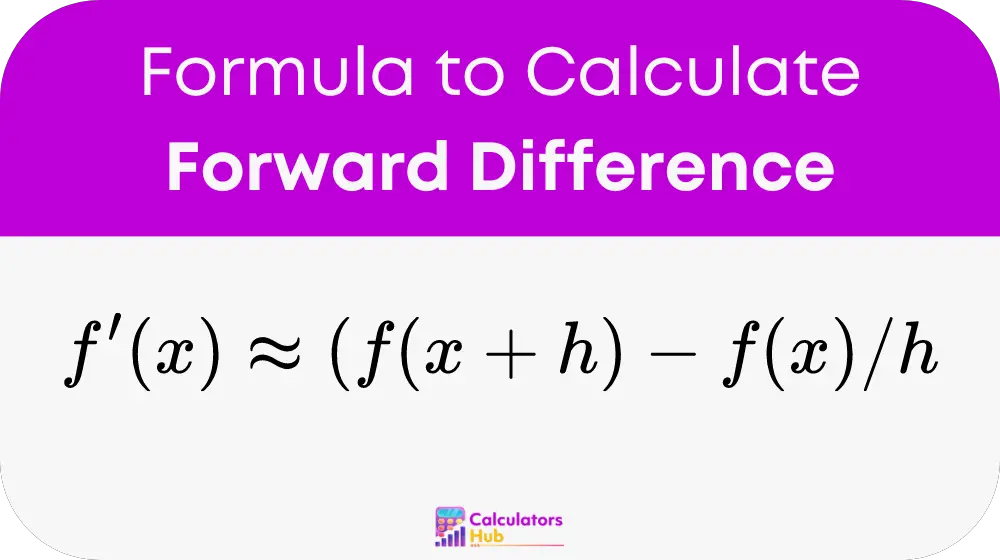The Forward Difference Calculator is an essential tool for approximating the derivative of a function at a specific point. This is particularly useful in mathematical modeling where precise changes in variables are crucial for simulations and predictions.
Formula of Forward Difference Calculator
The formula for the Forward Difference method is:

Where:
- f'(x) is the approximate first derivative at point x.
- f(x + h) is the function value at a point h units to the right of x.
- h is the step size, which is the distance between x and x + h.
This formula calculates the slope of the secant line that passes through the points (x, f(x)) and (x + h, f(x + h)). As the step size h approaches zero, the accuracy of the derivative approximation improves, nearing the true tangent at point x.
Table of Common Values
For convenience, here’s a table of common values calculated using the Forward Difference method for the function f(x) = x^2 at various step sizes:
| x | f(x) | h | f(x + h) | f'(x) Approximation |
|---|---|---|---|---|
| 1 | 1 | 0.1 | 1.21 | 2.1 |
| 2 | 4 | 0.1 | 4.41 | 4.1 |
| 3 | 9 | 0.1 | 9.61 | 6.1 |
Example of Forward Difference Calculator
Consider the function f(x) = x^2. Using a step size of h = 0.1, let’s calculate the approximate derivative at x = 2:
f'(2) ≈ (f(2 + 0.1) – f(2)) / 0.1 = (4.41 – 4) / 0.1 = 4.1
This example illustrates the practical application of the Forward Difference method.
Most Common FAQs
The smaller the step size, the more accurate the approximation. However, extremely small values can introduce numerical errors.
Unlike methods like the Central Difference, the Forward Difference uses only forward-pointing intervals, making it simpler but sometimes less accurate.
The main limitation is its accuracy for large step sizes and highly non-linear functions.